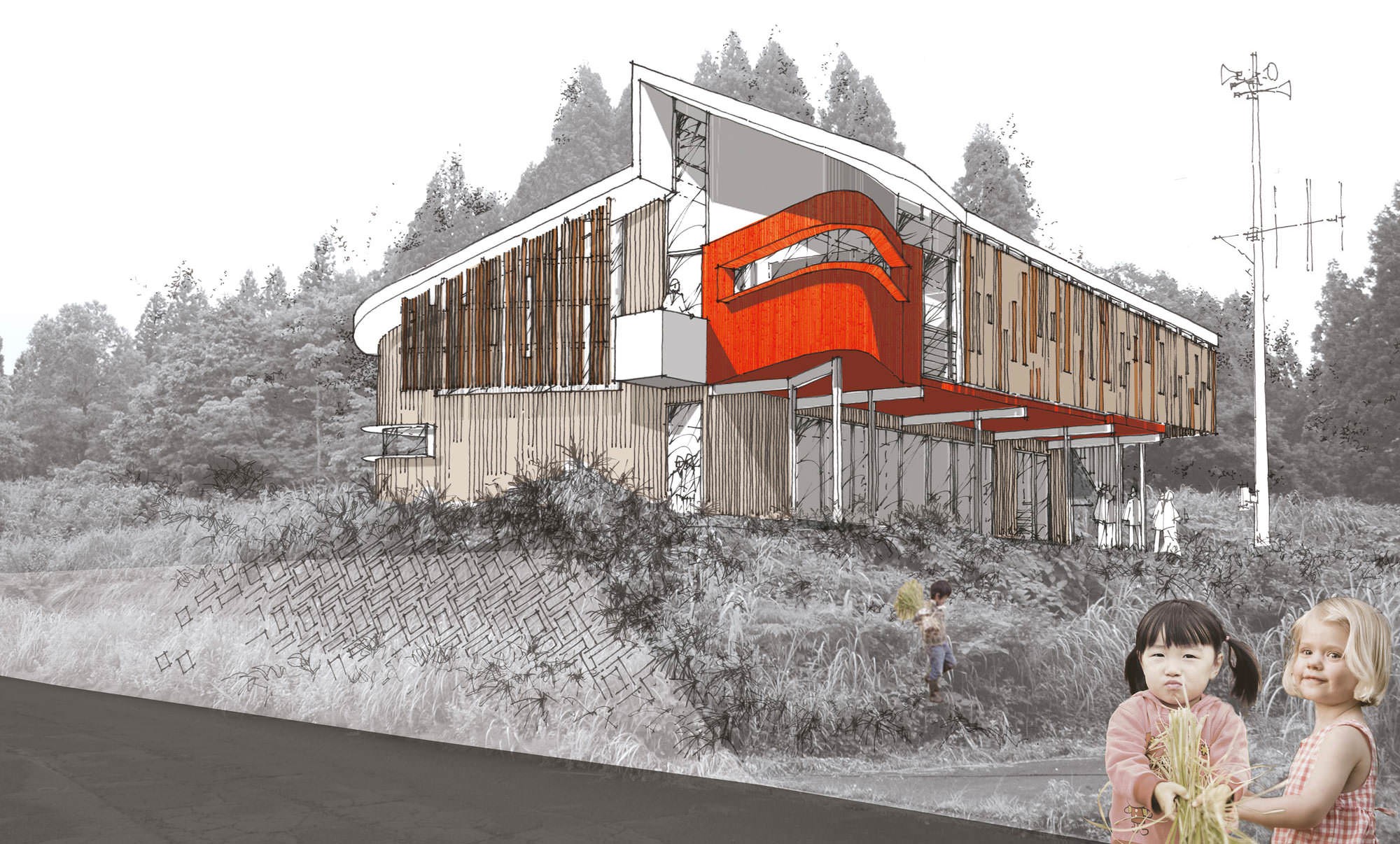We developed the core ideas behind our Australia House design competition entry during a brief but wonderful immersion in the Satoyama region in July 2011. The Australia House space is used for art installations during the Contemporary International Arts Festival, which takes place every three years in the mountainous Echigo-Tsumari region of Niigata Prefecture. The building enables Australian artists to work in residence and exhibit their work through exchanges with the local Urada community. This competition follows the previous Australia House, which was an abandoned Japanese farmhouse transformed into an exhibition space in 2009. Unfortunately it was severely damaged in the wake of the Japanese earthquake in March 2011.
This design competition aims to select a design team for the new Australia House as one of the main art projects for the 2012 Art Triennale, where a design that resonates with both Australian and Japanese culture is encouraged. The significance of the Echigo-Tsumari region is to be found in the special quality of the Satoyama landscape, around the rice and the mountains that move between the harsh extremes of being lush and green in summer to being steeped in snow come winter. We wanted to honour the seasonal life cycle of the rice tradition and the rural spirit of place. The vivid green rice terrace defines the public ground plane in summer for making and experiencing art in a double height space, whilst private spaces occupy the upper level vermillion box accessible in the depth of winter snow, warmed by rice husk fuel. We wanted to celebrate renewable wood and the regional agricultural vernacular handcrafted by the local people. Sculptural forms map vistas around the broader mountain valley landscape, whilst the red earth of Australia’s centre and Japan’s rising sun sits at once dramatically and subtly in both the white of winter and the lush green landscape of summer.
A special thank you to our Japanese collaborators on this entry; Hiroyuki Yoshikawa from Tripod Studio cdi (Tokyo) and Shigeru Hikone from Arup (Tokyo).





